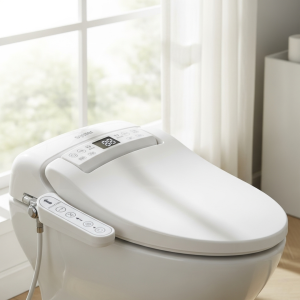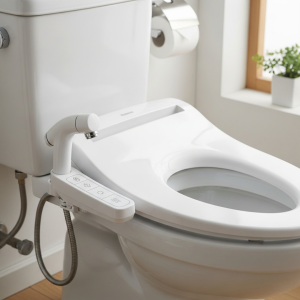How Does a Bidet Seat Work? A Complete Guide for First-Time Users
If you’re new to the world of bidet seats, you’re not alone. More and more people are making the switch from traditional toilet paper to the cleaner, more eco-friendly option: the bidet. But how does a bidet seat work exactly? In this complete guide for first-time users, we’ll walk you through the basics of how a bidet seat functions, its key features, and why it might just change your bathroom routine for the better.
What Is a Bidet Seat?
A bidet seat is a toilet seat with built-in water spray functionality designed for personal hygiene after using the toilet. Unlike standalone bidets, which are separate fixtures, a bidet seat attaches directly to your existing toilet. It replaces your regular toilet seat and adds features like a water nozzle, adjustable pressure, temperature controls, and sometimes even a dryer.
How Does a Bidet Seat Work?
At its core, a bidet seat uses a retractable nozzle that sprays water to clean your posterior or feminine area after using the toilet. Here’s a step-by-step look at how it works:
- Sitting Down: You use the toilet as usual. Afterward, instead of reaching for toilet paper, you activate the bidet.
- Water Spray Activation: Depending on the model, you’ll either press a button on a remote control, a side panel, or use a sensor to activate the spray.
- Nozzle Extension: The nozzle extends underneath you and sprays a controlled stream of water.
- Adjust Settings: Most bidet seats allow you to adjust water pressure, temperature, and spray direction for maximum comfort.
- Drying (Optional): Higher-end models include a built-in warm air dryer to reduce or eliminate the need for toilet paper.
- Nozzle Cleaning: After each use, the nozzle typically self-cleans to maintain hygiene.
Electric vs. Non-Electric Bidet Seats
There are two main types of bidet seats:
-
Electric Bidet Seats:

These plug into a power outlet and offer advanced features like heated seats, warm water, air drying, and customizable settings.
-
Non-Electric Bidet Seats:

These rely on water pressure and don’t require electricity. They’re more basic but still highly effective and budget-friendly.
If you’re looking for comfort and luxury, go for an electric model. If simplicity and affordability are your priorities, a non-electric bidet seat might be the right choice.
Benefits of Using a Bidet Seat
Now that you know how a bidet seat works, let’s explore why so many people are making the switch:
- Better Hygiene: Water cleans more thoroughly than dry toilet paper.
- Eco-Friendly: Bidets significantly reduce toilet paper usage, saving trees and water used in TP manufacturing.
- Cost-Effective: You’ll spend less on toilet paper in the long run.
- Comfort: Many users find the warm water and heated seat far more comfortable, especially during colder months.
- Ideal for Sensitive Skin: Great for people with hemorrhoids, rashes, or mobility issues.
How to Install a Bidet Seat
Most bidet seats are easy to install and don’t require a plumber. Here’s a quick overview:
- Turn off your toilet’s water supply.
- Remove the existing toilet seat.
- Attach the new bidet seat using the provided hardware.
- Connect the water supply line to the bidet.
- Plug it into a nearby outlet (if it’s electric).
- Test all functions to ensure everything works properly.
Installation typically takes under 30 minutes with basic tools.
So, how does a bidet seat work? It uses a hygienic water spray to give you a cleaner, more comfortable bathroom experience and it’s easier to install and use than most people think. If you’re ready to take your home hygiene to the next level, let Benner Plumbing & Heating help you choose and install the perfect bidet seat for your bathroom. We’re here to make your transition to cleaner, smarter living seamless and stress-free.
